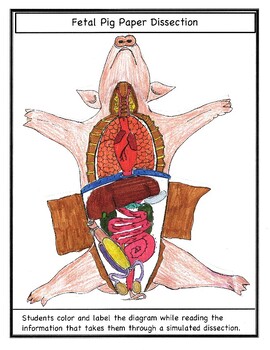Fetal Pig Paper Dissection
Biology Buff
1k Followers
Resource Type
Standards
NGSSMS-LS1-3
NGSSHS-LS1-2
Formats Included
- PDF
Pages
8 pages
Biology Buff
1k Followers
What educators are saying
Great resource. I used as an assignment prior to dissecting. Easy to follow and use. My students enjoyed it.
LOVE! all of the paper dissections!
Most of my students still prefer the live dissections, but the cost is not in my budget.
This is the next best thing.
Mrs. Beatty
Description
This paper dissection can be used as an alternative to a real dissection. Perhaps this is for the student who was absent during the dissection, for the students who don't want to do the dissection, or for the entire class when dissection is not a choice. The dissection is pretty simple and could be done by younger students. Blood vessels, bone, muscle and brain are not included. I think your students will enjoy this activity!
Total Pages
8 pages
Answer Key
Included
Teaching Duration
1 hour
Last updated 1 month ago
Report this resource to TPT
Reported resources will be reviewed by our team. Report this resource to let us know if this resource violates TPT’s content guidelines.
Standards
to see state-specific standards (only available in the US).
NGSSMS-LS1-3
Use argument supported by evidence for how the body is a system of interacting subsystems composed of groups of cells. Emphasis is on the conceptual understanding that cells form tissues and tissues form organs specialized for particular body functions. Examples could include the interaction of subsystems within a system and the normal functioning of those systems. Assessment does not include the mechanism of one body system independent of others. Assessment is limited to the circulatory, excretory, digestive, respiratory, muscular, and nervous systems.
NGSSHS-LS1-2
Develop and use a model to illustrate the hierarchical organization of interacting systems that provide specific functions within multicellular organisms. Emphasis is on functions at the organism system level such as nutrient uptake, water delivery, and organism movement in response to neural stimuli. An example of an interacting system could be an artery depending on the proper function of elastic tissue and smooth muscle to regulate and deliver the proper amount of blood within the circulatory system. Assessment does not include interactions and functions at the molecular or chemical reaction level.





